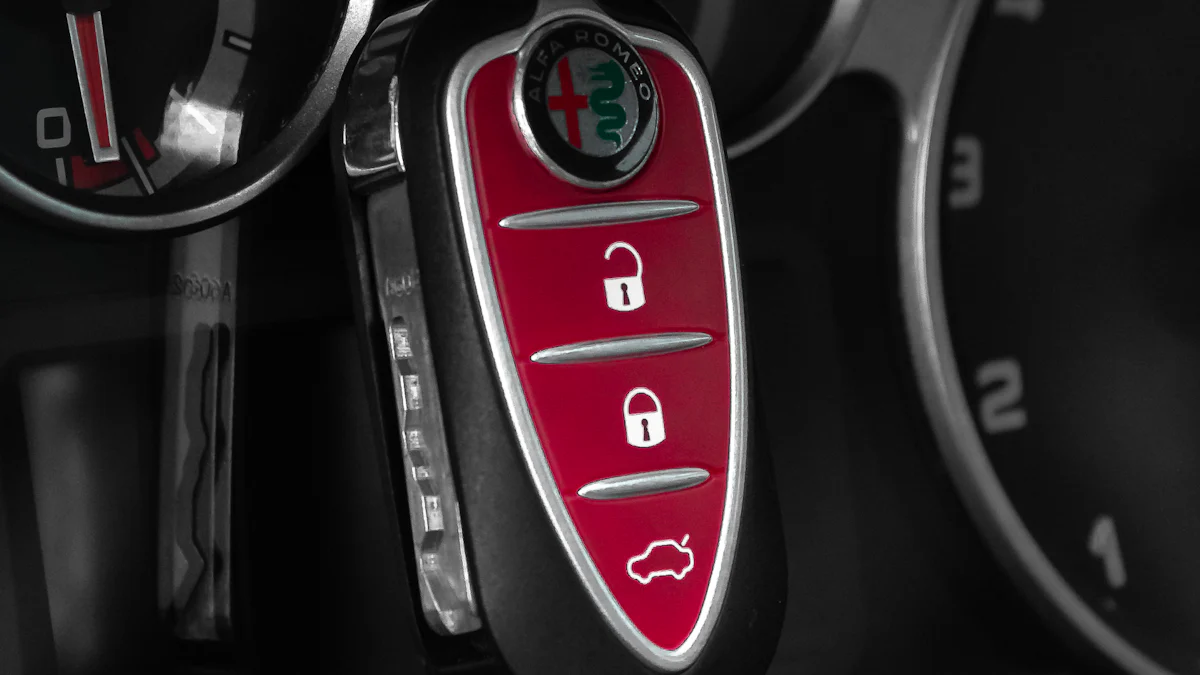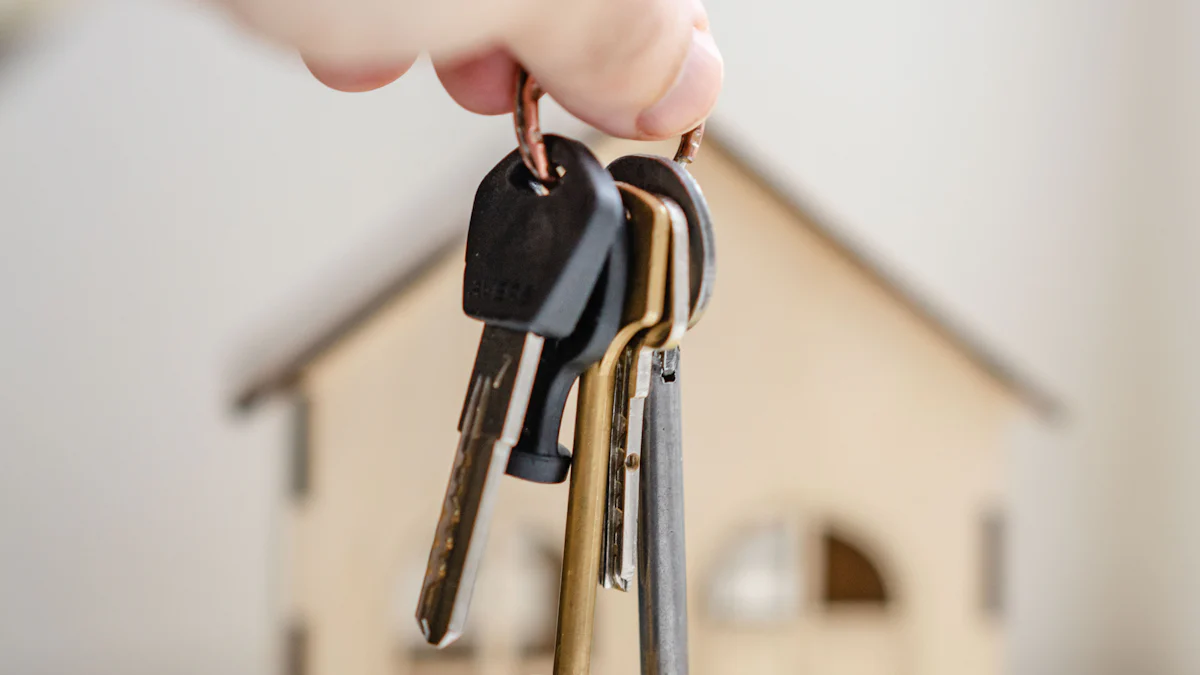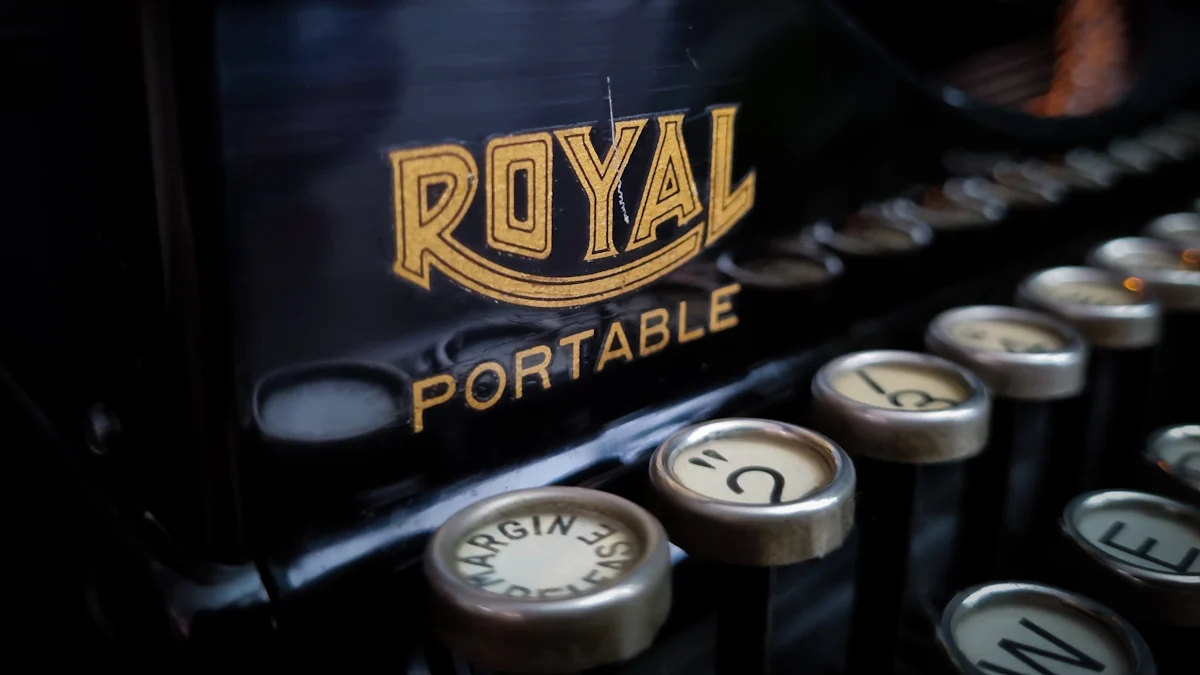How to Calibrate Key Cutting Machine Models Effectively

Calibration ensures your key cutting machine delivers precise and consistent results. Without proper calibration, you risk misaligned cuts, wasted materials, and compromised safety. Regular adjustments keep the machine’s cutting angles and positions accurate, which is essential for high-quality key duplication. Experts recommend recalibrating after receiving a new machine or after extended use. Monthly calibration often works well, but frequent usage may require more attention. Using a calibration kit simplifies the process, but even without one, you can rely on basic tools like blank keys to verify accuracy. Mastering how to calibrate key cutting machine models enhances both performance and reliability.
Key Takeaways
- Regular calibration is essential for maintaining the accuracy and reliability of your key cutting machine, preventing misaligned cuts and wasted materials. Use a systematic approach with essential tools like calibration kits, blank keys, and screwdrivers to ensure effective calibration across different machine models.
- Always prioritize safety by turning off the machine, wearing protective gear, and following manufacturer guidelines during the calibration process. Perform routine inspections and maintenance, including cleaning and lubrication, to extend the lifespan of your machine and reduce the need for frequent recalibration.
- Understand the specific calibration steps for different types of machines—manual, semi-automatic, and fully automatic—to achieve optimal performance.
- If calibration issues arise, such as misaligned blades or inconsistent cuts, troubleshoot promptly by inspecting components and adjusting settings as needed.
- Proper storage of your key cutting machine in a dry, stable environment helps maintain calibration accuracy and prolongs its operational life.
General Calibration Principles
Calibration is essential for maintaining the precision and reliability of your key cutting machine. By following general principles, you can ensure consistent performance across various models. This section outlines the tools, steps, and safety measures you need to know.
Universal Tools and Steps for Calibration
To calibrate effectively, you need the right tools and a systematic approach. While specific models may require unique adjustments, some tools and steps apply universally:
-
Essential Tools:
- Calibration kits: These often include gauges, alignment tools, and reference keys.
- Blank keys: Use these to test the accuracy of cuts after calibration.
- Screwdrivers and wrenches: These help adjust screws and bolts during the process.
- Cleaning supplies: Remove debris and dust before starting calibration.
-
Step-by-Step Process:
- Inspect the Machine: Check for visible wear or damage. Clean the machine thoroughly to remove any obstructions.
- Align the Cutting Blade: Ensure the blade is straight and positioned correctly. Misalignment can lead to inaccurate cuts.
- Adjust the Key Clamp: Verify that the clamp holds keys securely. Loose clamps can cause uneven cuts.
- Test with a Blank Key: Cut a blank key and compare it to the original. If discrepancies exist, make fine adjustments.
- Repeat as Needed: Continue testing and adjusting until the machine produces precise duplicates.
"Calibration defines the accuracy and quality of measurements recorded using a piece of equipment." This principle applies to key cutting machines, where even minor errors can compromise the duplication process.
By following these steps, you can maintain the machine's accuracy and extend its lifespan.
Safety Precautions During Calibration
Safety should always be a priority when calibrating your machine. Improper handling can lead to injuries or damage to the equipment. Keep these precautions in mind:
- Turn Off the Machine: Always power down the machine before making adjustments. This prevents accidental activation.
- Wear Protective Gear: Use safety glasses and gloves to protect yourself from sharp edges and debris.
- Avoid Over-Tightening: When adjusting screws or bolts, avoid applying excessive force. Over-tightening can damage components.
- Work in a Clean Area: Ensure your workspace is free of clutter. A clean environment reduces the risk of accidents.
- Follow Manufacturer Guidelines: Refer to the user manual for model-specific instructions. Each machine may have unique safety requirements.
Calibration not only improves performance but also safeguards the integrity of your machine. By adhering to these principles, you can confidently handle the process and achieve optimal results.
How to Calibrate Key Cutting Machine Models by Type

Calibrating key cutting machines requires understanding the unique features and mechanisms of each type. Whether you use a manual, semi-automatic, or fully automatic machine, following the correct steps ensures precise key duplication and optimal performance.
Manual Key Cutting Machines
Manual key cutting machines rely on your skill and precision. Calibration for these machines focuses on aligning the cutting blade and key clamp accurately. Follow these steps:
- Inspect the Blade and Clamp: Check the cutting blade for wear or damage. Ensure the key clamp holds keys securely without slipping.
- Adjust the Cutting Depth: Use a calibration gauge or blank key to set the cutting depth. Ensure the blade cuts evenly across the key's surface.
- Verify Alignment: Align the blade with the guide to ensure it follows the key's original pattern. Misalignment can lead to inaccurate cuts.
- Test with a Blank Key: Cut a blank key and compare it to the original. Make fine adjustments if necessary.
"The Framon 2 Key Machine is known for its simplicity in calibration, making it an excellent choice for locksmiths who value efficiency."
Manual machines require regular calibration due to their reliance on manual adjustments. Consistent maintenance ensures reliable performance.
Semi-Automatic Key Cutting Machines
Semi-automatic machines combine manual operation with automated features. Calibration involves both mechanical and electronic adjustments. Here's how to calibrate these machines:
- Clean the Machine: Remove debris from the cutting area using a small vacuum or brush. Clean the blade and clamps with a damp cloth.
- Set the Cutting Parameters: Use the machine's control panel to input the desired cutting depth and spacing. Refer to the user manual for model-specific instructions.
- Align the Blade and Guide: Ensure the blade aligns with the guide for accurate cuts. Use a calibration card or reference key for precision.
- Perform a Test Cut: Cut a blank key and compare it to the original. Adjust the settings if the cut is uneven or misaligned.
The Promatic-100™ machine offers a manual mode for precise calibration of spacing and cutting adjustments.
Semi-automatic machines provide a balance between control and automation, making them ideal for locksmiths who handle diverse key types.
Fully Automatic Key Cutting Machines
Fully automatic machines use advanced technology to deliver precise results with minimal manual intervention. Calibration for these machines focuses on electronic settings and automated processes. Follow these steps:
- Power On the Machine: Turn on the machine and access the calibration menu through the control panel.
- Select the Calibration Function: Choose the appropriate calibration option, such as cutting depth or blade alignment. Machines like the Xhorse Condor XC-Mini Plus include specific functions for cutting calibration.
- Insert a Blank Key: Place a blank key in the clamp and start the calibration process. The machine will automatically adjust its settings based on the key's dimensions.
- Review the Results: Inspect the cut key for accuracy. If discrepancies exist, repeat the calibration process or consult the user manual.
"The Futura Auto Key Machine uses precision measurements to ensure accurate key duplication, making calibration a seamless process."
Fully automatic machines simplify the calibration process, but regular maintenance is essential to maintain their accuracy and efficiency.
Troubleshooting Common Calibration Issues

Even with regular maintenance, calibration issues can arise and disrupt the performance of your key cutting machine. Identifying and resolving these problems promptly ensures accurate key duplication and prevents further complications. Below are common calibration issues and practical solutions to address them.
Misaligned Cutting Blades
Misaligned cutting blades are a frequent issue that can lead to uneven or inaccurate key cuts. This problem often occurs due to wear and tear or improper adjustments during previous calibrations. To fix this:
- Inspect the Blade Alignment: Check if the blade is parallel to the guide. A misaligned blade will not follow the key's original pattern accurately.
- Adjust the Blade Position: Use a screwdriver or alignment tool to reposition the blade. Ensure it sits securely in its housing to prevent movement during operation.
- Test with a Blank Key: Cut a blank key and compare it to the original. If the cut is still uneven, repeat the alignment process.
"Calibration defines the accuracy and quality of measurements recorded using a piece of equipment." Misaligned blades compromise this accuracy, making proper alignment essential.
Regularly inspecting and adjusting the blade minimizes the risk of misalignment and ensures consistent performance.
Inconsistent Key Cuts
Inconsistent key cuts can result from various factors, including debris buildup, worn components, or incorrect calibration settings. This issue not only wastes materials but also affects the reliability of your machine. To resolve this:
- Clean the Machine Thoroughly: Remove debris and dust from the cutting area. Use a small brush or compressed air to clean hard-to-reach spots.
- Check the Key Clamp: Ensure the clamp holds keys securely. A loose or damaged clamp can cause the key to shift during cutting.
- Verify Calibration Settings: Double-check the cutting depth and spacing settings. Incorrect parameters can lead to uneven cuts.
- Perform Multiple Test Cuts: Use blank keys to test the machine's performance. Adjust the settings until the cuts are consistent.
Over time, results and accuracy tend to drift when using certain technologies. Regular recalibration helps counteract this drift and maintain precision.
By addressing these factors, you can restore the machine's ability to produce consistent and accurate key cuts.
Machine Not Responding to Calibration
Sometimes, the machine may fail to respond to calibration attempts. This issue can stem from software glitches, mechanical faults, or user errors. To troubleshoot:
- Restart the Machine: Power off the machine and restart it. This simple step can resolve minor software issues.
- Inspect for Mechanical Faults: Check for loose wires, damaged components, or obstructions that may interfere with the calibration process.
- Update the Software: Ensure the machine's software is up to date. Outdated software can cause calibration functions to malfunction.
- Consult the User Manual: Refer to the manual for model-specific troubleshooting steps. If the issue persists, contact the manufacturer for support.
While calibration standards are widely accepted, challenges like unexpected malfunctions can arise. Addressing these promptly ensures the machine operates efficiently.
By following these steps, you can identify and resolve the root cause of the problem, restoring the machine's functionality.
Maintenance Tips for Accurate Calibration
Proper maintenance ensures your key cutting machine remains accurate and reliable. By following these tips, you can extend the lifespan of your machine and reduce the need for frequent recalibration.
Regular Cleaning and Lubrication
Dirt and debris can accumulate on your machine over time, affecting its performance. Regular cleaning keeps the components in optimal condition and prevents calibration issues. Follow these steps to maintain cleanliness:
- Clean the Cutting Area: Use a soft brush or compressed air to remove debris from the blade and clamps. Pay attention to hard-to-reach areas where dust tends to collect.
- Wipe Down Surfaces: Use a damp cloth to clean the exterior and interior surfaces. Avoid using harsh chemicals that could damage the machine.
- Lubricate Moving Parts: Apply a small amount of machine oil to the moving components, such as the blade mechanism and key clamp. This reduces friction and ensures smooth operation.
"A well-maintained machine not only performs better but also lasts longer," as highlighted in many professional locksmith tutorials.
Cleaning and lubrication should be part of your routine maintenance schedule. These simple steps can significantly improve the accuracy of your machine.
Routine Inspections
Regular inspections help you identify potential issues before they escalate. By checking your machine frequently, you can address problems early and maintain consistent performance. Here’s how to conduct an effective inspection:
- Examine the Blade: Look for signs of wear or damage. A dull or chipped blade can compromise the quality of key cuts.
- Check the Key Clamp: Ensure the clamp holds keys securely. Loose or misaligned clamps can lead to uneven cuts.
- Inspect Calibration Settings: Verify that the cutting depth and spacing settings remain accurate. Adjust them if necessary.
- Test the Machine: Perform a test cut using a blank key. Compare the result to the original key to ensure precision.
Routine inspections save time and money by preventing costly repairs. They also help you maintain the machine’s calibration for longer periods.
Storing Machines Properly
Proper storage protects your key cutting machine from environmental factors that could affect its performance. Follow these guidelines to store your machine correctly:
- Choose a Dry Location: Moisture can cause rust and corrosion, damaging the machine’s components. Store it in a dry, well-ventilated area.
- Cover the Machine: Use a dust cover to shield the machine from dirt and debris when not in use.
- Avoid Extreme Temperatures: Keep the machine away from direct sunlight and extreme heat or cold. Temperature fluctuations can affect its calibration.
- Secure the Machine: Place the machine on a stable surface to prevent accidental falls or damage.
Practical tips like these are often shared in instructional videos, helping locksmiths maintain their equipment effectively.
Proper storage ensures your machine stays in good condition, reducing the need for frequent recalibration and repairs.
Effective calibration plays a vital role in ensuring your key cutting machine delivers accurate and reliable results. By following model-specific guidelines, you can maintain precision and avoid frequent recalibration. Regular maintenance, such as cleaning and inspecting components, extends the machine’s lifespan and enhances its performance. Understanding how to calibrate key cutting machine models tailored to their unique requirements allows you to achieve consistent results. Calibration not only controls errors but also ensures repeatable accuracy, making it an essential practice for every locksmith.
FAQ
What is calibration software, and how does it assist with key cutting machines?
Calibration software simplifies the process of managing and documenting calibration tasks. Tools like the Beamex CMX calibration software help you plan, analyze, and record all calibration activities efficiently. This ensures your key cutting machine operates at peak performance while maintaining accurate records for future reference.
Why should you follow the manufacturer’s recommended calibration intervals?
Manufacturers design their calibration intervals to keep your machine functioning within optimal tolerances. Ignoring these recommendations can lead to errors in key duplication and reduce the lifespan of your equipment. Regular adherence ensures consistent performance and minimizes costly repairs.
How does calibration management software prevent errors?
Calibration management software eliminates the need for handwritten reports and manual calculations, which often lead to mistakes. It ensures all procedures are documented accurately and allows you to generate detailed reports whenever needed. This streamlines your workflow and reduces the risk of calibration-related issues.
What equipment benefits from regular calibration?
For key cutting machines, regular calibration ensures accurate duplicate keys.
Why is it important to maintain calibration practices for machines like the Futura Auto?
Machines like the Futura Auto experience vibrations during operation, which can misalign components over time. Regular calibration keeps the machine aligned and ensures it produces accurate results. Neglecting this practice can lead to inconsistent key cuts and reduced efficiency.
How can you ensure accurate results from a calibrated key cutting machine?
To achieve accurate results, always follow the recommended calibration steps for your machine model. Use blank keys to test the machine after calibration and compare the cuts to the original. Regular maintenance, such as cleaning and inspecting components, also plays a crucial role in maintaining precision.
What should you do if your machine fails to respond to calibration?
If your key cutting machine doesn’t respond to calibration, start by restarting it to resolve minor software glitches.
How does proper storage affect calibration accuracy?
Storing your machine in a dry, stable environment prevents rust, corrosion, and damage caused by extreme temperatures. Use a dust cover to protect it from debris when not in use. Proper storage reduces the need for frequent recalibration and extends the machine’s lifespan.
What ongoing services can help maintain your machine’s performance?
Many manufacturers and service providers offer ongoing calibration services to ensure your machine performs optimally throughout its lifetime. These services include routine inspections, software updates, and professional recalibration, helping you maximize the efficiency and accuracy of your equipment.
Why is calibration critical for key cutting machines?
Calibration controls and minimizes errors in the key duplication process. It ensures your machine operates within acceptable tolerances, producing precise and consistent results. Regular calibration not only improves performance but also extends the life of your machine, making it an essential practice for every locksmith.
See Also
Mastering Key Cutting Machines For Optimal Performance
Understanding The Functionality Of Key Cutting Machines
A Guide To Duplicating Keys With Cutting Machines
